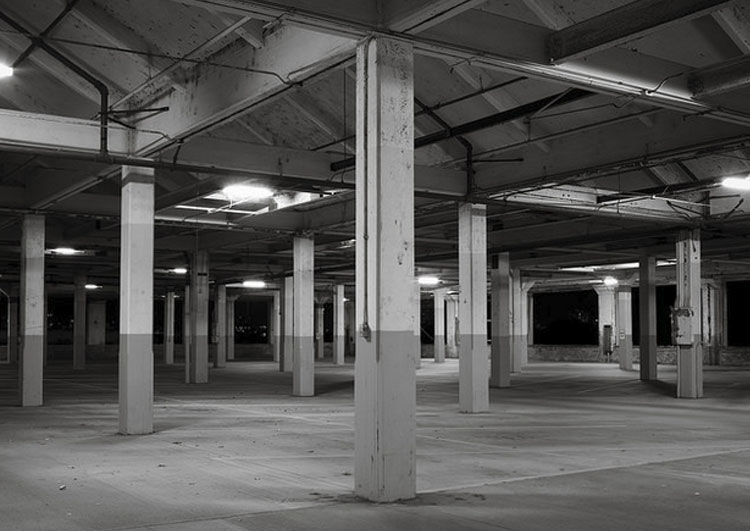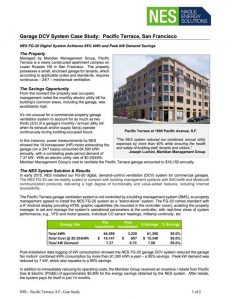Slash your parking garage energy bills by downshifting your exhaust fans
By Jennie Morton
A parking garage may be a nice amenity for your tenants, but chances are it’s driving up your utility bill. If you have an enclosed parking garage, you use a carbon monoxide (CO) sensor system to dismiss noxious fumes. If exhaust fans are configured as an on/off response, where all fans activate if one sensor is triggered, it’s easy to use unwarranted amounts of energy.
“Most property owners and managers are savvy about how to green their buildings, but they should also be searching for overlooked areas to capture additional energy savings. Often it’s in the garage,” explains Frank Nagle, founder and principal partner of Nagle Energy Solutions.
To avoid excessive utility bills, you can install a demand-control ventilation (DCV) system. This turnkey solution uses variable frequency drive (VFD) technology to effectively address CO levels while reducing garage fan speeds to almost imperceptible energy levels.
How It Works
Both on/off and DCV systems prevent exhaust from surpassing dangerous levels. The difference is in how much energy they use to achieve this.
In on/off systems, fan motors are activated at full power until safe conditions resume and then shut off. Neglected basic maintenance, such as recalibration and sensor replacement, decreases efficiency.
A DCV system continuously runs fans at less than 3% of the full-speed power draw, only increasing air flow when prompted by a sensor. After dispersing CO, the fans resume baseline speeds.
This creates a constant supply of fresh air while capturing energy savings. It also maintains negative pressure in substructure garages – on/off systems do not.
Dramatic Savings
What if you were told you could reduce your exhaust fan demand consumption by over 93% annually with a payback of under 2 years? That’s exactly what Beacon Capital Partners heard after implementing the VFD sensors in one of its San Francisco properties.
Nagle Energy Solutions and manufacturer AirTest Technologies retrofit five exhaust fans in an enclosed, 3-story parking garage. Previously, Beacon had tried to conserve energy by running four of the fans less than 3.5 hours a day and one nonstop. Because they typically ran during peak hours, they consumed over 241,000 kWh a year at the cost of $25,100.
Along with local utility Pacific Gas & Electric, Nagle Energy Solutions established baseline energy consumption before installation and recorded energy usage 3 weeks thereafter. Because of the lower speeds, fan runtime was increased from 3.5 hours to 12 hours a day. The results showed:
Energy usage was reduced by 93.9%, saving over 226,000 kWh annually.
Yearly utility bills were slashed from over $25,000 to just over $1,500.
Total kW demand was decreased by almost 96%.
“We were attracted to the technology for three reasons,” says Al Scaramelli, a senior vice president for Beacon. “We were impressed by the cost of installation vs. the savings we’d realize on energy. The CO sensors and VFD technology have been around for years – it’s proven and reliable. Lastly, the savings were validated, not estimated, before and after installation.”
Cost Benefits
The cost of a DCV system is dependent on the square footage of your garage, the horsepower of your fan motors, daily runtimes, and your kilowatt-hour rate. “A system can be installed from $20,000 to $85,000, and most have an ROI of under 24 months,” explains Nagle. Many utilities also offer rebates that can drive down the price further.
Make sure savings are not calculated on manufacturer-specified horsepower, but by the energy consumption fans actually use. “Owners should require the savings to be guaranteed and measured,” advises Scaramelli. “Far too often savings are calculated using overly optimistic assumptions to make it look attractive financially, only to find the project is nowhere near your expected ROI after the fact.”
A DCV solution is a common sense approach to your parking garage exhaust fans. Green your building by reducing your energy consumption and put a halt to needless spending for ventilation.
Jennie Morton is assistant editor of BUILDINGS.
Originally published in Buildings Magazine, April, 2011. The original article can be found here.



